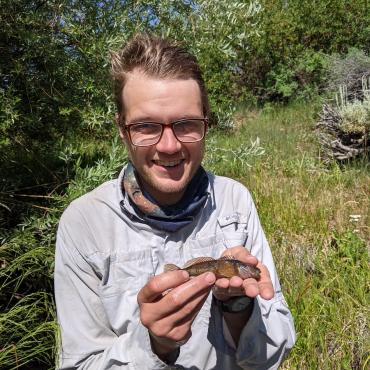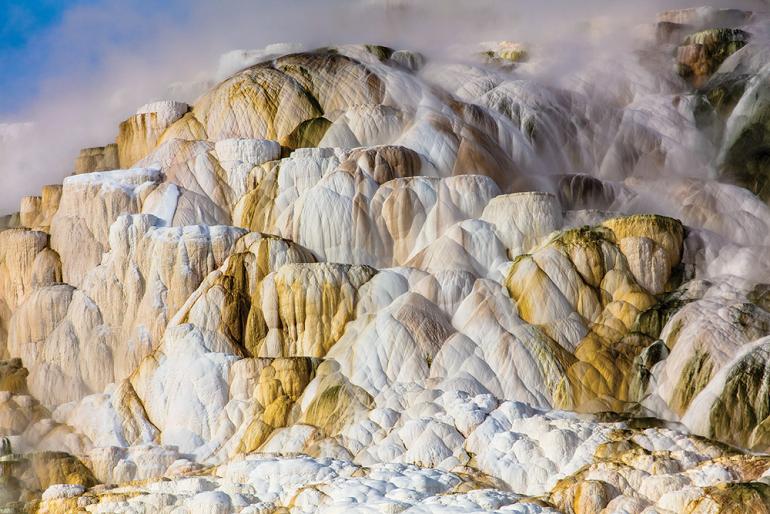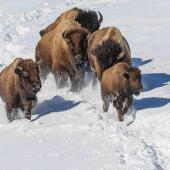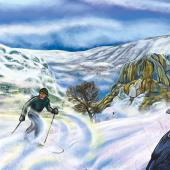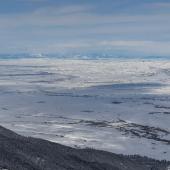Charismatic Microfauna
Yellowstone's case for microbial preservation.
Our system of wildlife preservation tends to focus on a handful of large, fuzzy critters—the “charismatic megafauna”—and is, therefore, “absolutely inverted,” says Dr. Mark Young professor of virology at MSU’s Thermal Biology Institute (TBI). Although megafauna generally occupy the top tier of the food web, ecosystems are largely driven by invisible processes carried out by microfauna; chief among them is the recycling of critical nutrients. No species could survive without a ready supply of nutrients. Just as we must balance our consumption of fats, proteins, and carbohydrates, all animals (and plants) must obtain a healthy supply of essential nutrients. However, the organisms that are responsible for making nutrients available are themselves too small to see and are perhaps the least appreciated of all Earth’s organisms.
Microbes are best known for things like strep throat, food poisoning, and other, far more severe diseases, but the vast majority do not cause illness and many are absolutely essential for the continued existence of life. In fact, according to Dr. Bill Inskeep, professor of geomicrobiology at TBI, “…microbes take center stage in nearly all environments. We just don’t recognize it.” Microbes break down animal and plant wastes of all types, turning them into usable nutrients that can be taken up by plants and eventually passed along to animals. In this way, microbes are integral to all life on Earth. Not even our grain crops could grow without a healthy community of microbes delivering nutrients to them. If ecosystems are completely reliant upon microbial life, how do we go about preserving them? Is our “inverted” preservation system the best we can do? Are there examples of microbial preservation already taking place? Enter, Yellowstone National Park.
Founded as the nation’s first national park in 1872, Yellowstone has been a symbol for the preservation movement since day one. In 1903, Teddy Roosevelt visited Yellowstone, saying that nowhere else in the world “…is there to be found such a tract of veritable wonderland, made accessible to all visitors, where at the same time, not only the scenery of the wilderness, but the wild creatures of the park are scrupulously preserved.” Since that time, visitation to Yellowstone has increased dramatically. Last year, over four million people crowded into the Park to witness one of the only places where a full complement of predators still coexists with its natural prey.
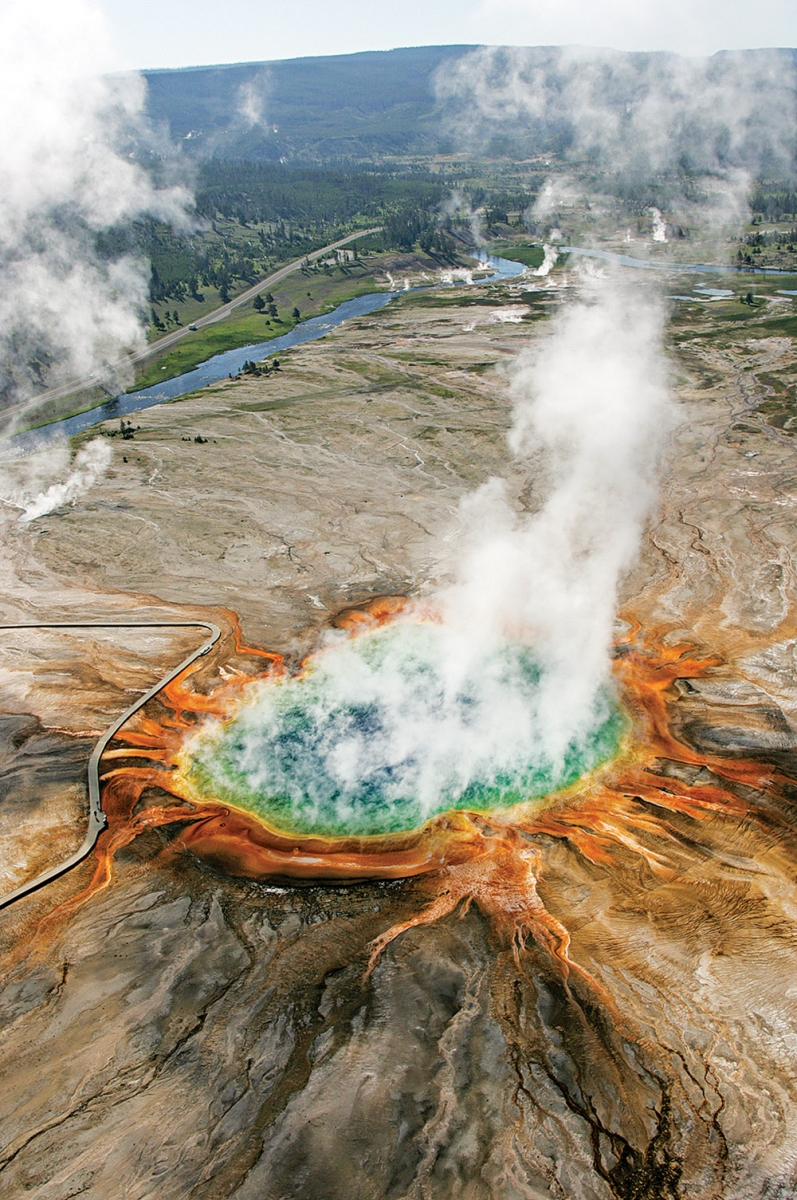
Another main attraction, the Park’s thermal features, is on full display at locations such as Mammoth Hot Springs, the Norris Geyser Basin, and Old Faithful. Temperatures within the geysers, hot springs, mud volcanoes, and sulfur cauldrons often reach 200 degrees, with many above the boiling point. The waters within can also be extremely acidic. Yet, despite these extremely harsh conditions, a unique community of microorganisms lives within Yellowstone’s thermal features. Visitors are instructed not to stray off boardwalks as much to preserve the integrity of these systems as for their own protection.
From a safe distance, one can see a variety of colorful mats of what looks like algae living under Yellowstone’s superheated waters. These are, in fact, made up not only of algae, but of bacteria and a group of more recently discovered microbes, archaea. Perhaps the most stunning example of these colorful communities resides in the famed Grand Prismatic Spring. Huge orange, brown, yellow, and green mats are evidence of extremely dense colonies of bacteria, such as Calothrix, Synechococcusand Thermus. Just up the road at the Norris Geyser Basin, the same colors are produced by a different microbial community, including the archaea Metallosphaera, Caldisphaeraand Sulfolobus, as well as the red alga, Cyanidioschyzon.
While these bacteria, archaea, and algae create beautiful colors within Yellowstone’s hot springs, most people would be hard-pressed to come up with a reason to care much about them. Not Inskeep, however. With more than two decades of experience in the Park, he’s made a career of studying its microbes. With advances in genetic technologies, Inskeep and others have been able to characterize many of Yellowstone’s microorganisms. In 1998, realizing that most microbiologists at the time didn’t have a background in chemistry, Inskeep decided to complement existing research through work on the interactions between microbes and the chemistry of their surrounding environment. This work caught the attention of the US government, including the Department of Energy (DoE) and NASA. Why would an energy agency and a space-exploration agency be interested in the invisible critters of Yellowstone? In the case of the DoE, they wanted to understand how environmentally important microbial communities within soil and other habitats form and cooperate. Due to the limited number of species living within the Park’s hot springs, they provide a simple model system for apprehending how each member of a community interacts. Given basic information on these processes between only a few species, DoE researchers could then extrapolate that to more complex communities, such as those involved in the production of biofuels.
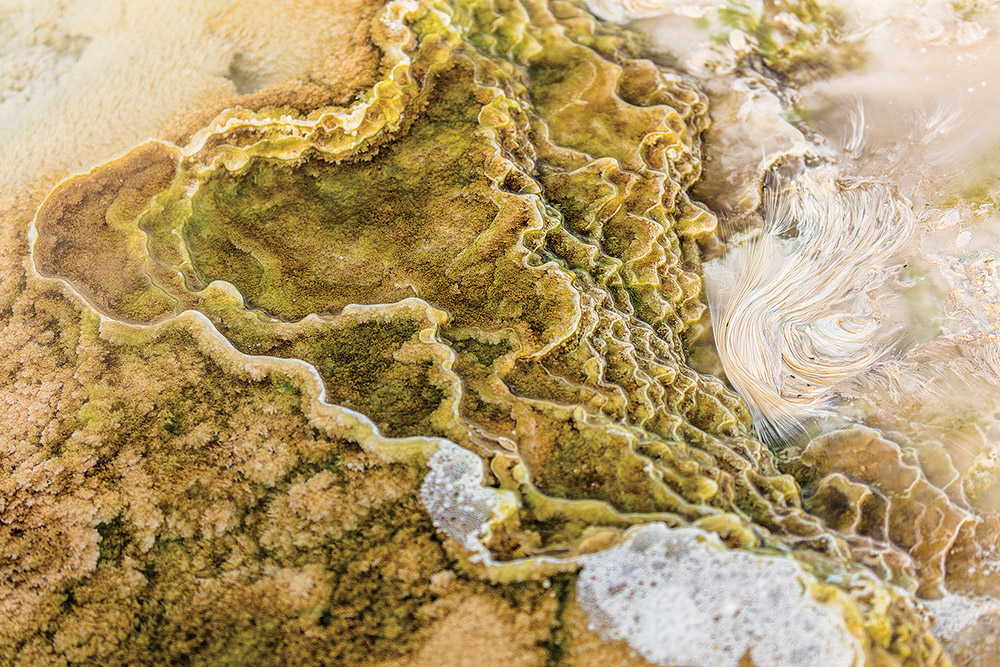
NASA was interested in Inskeep’s work for a different reason. Researchers have known for quite some time that the environment of early Earth was much different than it is today. Currently, it’s believed that conditions were much more extreme, exhibiting very high temperatures. Under these conditions, the initial forms of life appeared. Known as “thermophiles,” or heat-loving organisms, these single-celled microbes are the basis for all living things today. One place where thermophiles exist in abundance is Yellowstone. Understanding microbes within the Park will give NASA a better understanding of how the earliest life forms interacted, evolved and gave rise to multicellular beings, including humans—knowledge that’s particularly useful to studying other planets in our solar system and beyond.
In addition to the bacteria, archaea, and algae inhabiting Yellowstone’s hot springs, there is another category of microbe that’s every bit as important. Not even considered “alive” in the traditional sense, viruses play a hugely important role in regulating the rest of the microbial and non-microbial world. According to Young, viruses and cellular life co-evolved, both dependent on the other for survival. Counter to the popular notion that viruses are purely destructive, Young says that many cells, microbial and otherwise, form a symbiotic relationship with viruses. When a cell contains non-harmful viruses that are related to pathogenic ones, it is actually protected from infection. In exchange, the virus symbionts are protected by the bacteria and are allowed to multiply. This occurs not only in benign environments, but also in extreme conditions like those in Yellowstone. According to Young, however, these hot-spring viruses look totally different from any other—physically and genetically. As part of the microbial community, the interaction between viruses and their bacterial or archaean hosts has also become an important model for understanding how predators and prey evolve to combat each other over time. While bacteria, algae, and archaea are the ones regulating an ecosystem’s chemical and nutrient supply, viruses are the ones regulating them.
But Yellowstone’s microbes have provided more than just academic knowledge. On a trip to the west coast in July of 1964, Dr. Thomas Brock, a microbiologist from Wisconsin, took a detour through the Park. He was fascinated with the various colors produced by the bacteria, archaea, and algae. “Once I got knowledge of the system, I realized there were lots more implications and applications,” he says. Brock soon established a laboratory in West Yellowstone and brought in other researchers and students. By 1967, Brock had hit pay dirt, publishing his discovery of unique thermophiles in the journal Science. Two years later, with the help of undergraduate student Hudson Freeze, Brock was able to isolate and grow a bacterium that had formed long, pink filaments in Yellowstone’s hot springs. Known as Thermus aquaticus, this bacteria was the most extreme thermophile known at the time. Importantly, Brock showed in subsequent research that the proteins in Thermus aquaticuswere able to operate at high temperatures, even after being removed from the bacteria. Unknown to Brock at the time, these findings would change the course of the biological sciences forever and make him one of the fathers of biotechnology.
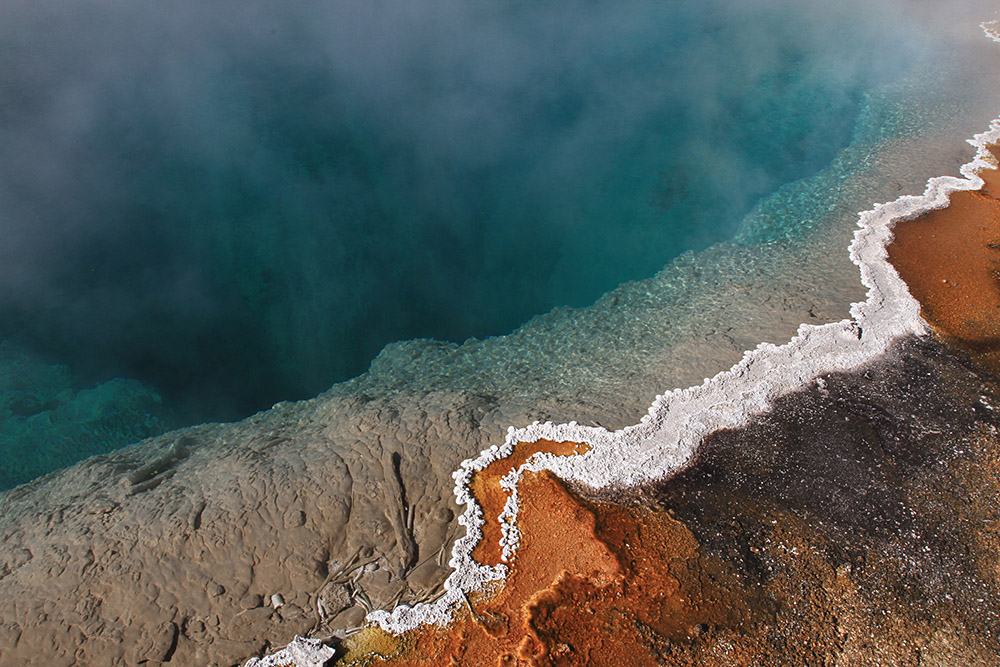
In 1983, using the temperature-stable proteins found in Thermus aquaticus, researchers developed a technique known as polymerase chain reaction (PCR) that could take a single strand of DNA and replicate it millions of times. This technique is integral to all genetic work that has been done since that time, leading to great leaps in criminal justice, medicine, and preservation—most recently in testing for the novel coronavirus.
Given that microbes are an extremely important member of the ecological community, have led us to a greater understanding of life on Earth, and provided the raw materials needed for some of our most important technological advances, how can we better preserve them? Even in Yellowstone, where microbes have arguably left the greatest impression on humans, the impetus for preserving the land was not to protect microbial life. But perhaps microbial life should be preserved simply because it has intrinsic value. After all, just because something can only be seen with a microscope, doesn’t mean it is worthless. It does, however, make preservation efforts all the more difficult.
While further research is needed in order to preserve microbial life, there are some practical ways in which we can move towards that end. First, some have suggested that microorganisms be monitored more carefully. An environmental change that has no impact on larger species may in fact drastically change a microbial community. And due to the interconnectedness of nature, changes to a microbial community may simply have a delayed impact on the system as a whole. Secondly, some locations harbor microbial communities that are found nowhere else or exhibit extreme diversity of microbial life. Examples include high-temperature iron-oxide mats in Yellowstone, rock-dwelling microbes of the Niagara Escarpment in Canada, and some regions of the Arctic. All that’s required is that the habitats in which these communities live be protected. Are there other habitats that should be preserved for the sake of the associated microbes? Inskeep says this is “…a good thing to ask of the scientific community.” Lastly, we need to start asking ourselves how much we value microbes—for their benefits to us and intrinsically. “I have seen thermal areas in New Zealand, Iceland, Italy, and Japan that have been destroyed by developments,” says Brock. Perhaps education about this unseen world is a good place to start.
Species must constantly evolve and gain advantage over one another simply to survive. This “evolutionary arms race” has played out over the entire 3.7 billion years life has existed on Earth. For most of that time, all life was microbial: bacterial, archaean, and others. In a time when one species—humans—so dominates this planet, is it not our responsibility to ensure all creatures are able to continue in that race?


